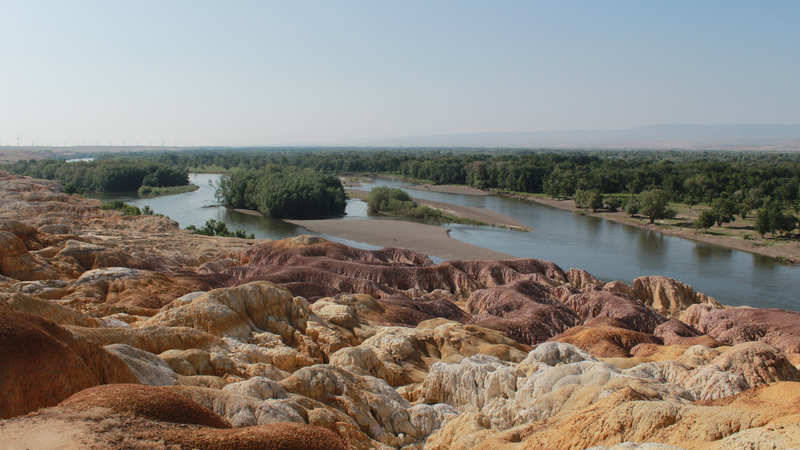Hidden within the wind-sculpted ridges of the Altai Mountains, the Five-Colored Beach (Wucaitan Park) spans both banks of the Irtysh River in the Chinese mainland’s northern Xinjiang Uygur Autonomous Region. Its name hints at a rainbow of red, ocher, yellow and green hues dancing across towering Yardang formations.
These surreal landscapes trace back hundreds of millions of years to when Wucaitan was a vast lakebed. Erosion from rainfall, wind and fierce thunderstorms, paired with tectonic shifts, drained the ancient lake and exposed thick coal seams. Over time, ignited by lightning and the blazing desert sun, these seams combusted, sintering minerals and forging bizarre rock sculptures that now glow in vivid shades.
A striking contrast unfolds as the arid northern ridges meet the lush oasis on the river’s southern bank. Here, verdant woods hug the water’s edge, offering a living testament to how water and fire can reshape terrain over eons.
Today, travelers and digital nomads venture to Wucaitan to capture its kaleidoscopic vistas and immerse themselves in a landscape sculpted by nature’s most primal forces. Beneath its surface, the region also holds gold, agate, quartz and iron—markers of its deep mineral heritage.
For young explorers seeking off-the-grid adventures, the Five-Colored Beach promises more than photography—it’s a window into geological time where every sunrise unveils a new masterpiece.
Reference(s):
Five-colored beach, a Yardang landform born from sunlight and thunder
cgtn.com




